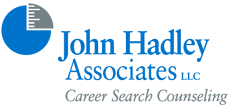Build a Visibility Campaign (Part 2)
From Career Tips, 2019 Volume 1, January 2019

In January I talked about the power of creating a strong visibility campaign for your job search, and for your career. This is how you make sure key leaders know who you are, and why you are a real talent, so that opportunities seek you out. This requires that you be really clear on the talent you bring to the table, and present it consistently and well.
Last time I discussed 7 ways to build this visibility campaign...here are 6 more:
1. Create strong marketing messages.
You need to be able to describe in 10 seconds or less a key problem you can solve or result you can provide in the role you would love to have. Or if you are already in that role, then describe what you have contributed recently. These are your marketing headlines.
Forget about 30 second elevator pitches - they are too long. When you get really interesting marketing headlines, and you are in a situation where 30 second pitches are expected, you can always string together a few to fill out the time.
Notice that I said headlines, plural. There's no one marketing message that will both cover the range of what you do, AND will be specific enough to be engaging. Just saying "I make my company money" or "I generate sales" will get little attention, because you haven't given listeners enough to sink their teeth into.
For more on creating strong marketing messages, see these articles:
https://jhacareers.com/30-second-pitch/
https://jhacareers.com/the-5-cs/
2. Create your own personal tagline.
Every time you send out an email or hand out a business card, you have an opportunity to foster your professional image. Why not take one of the marketing headlines that you crafted above, and turn it into a tagline you can include as part of your email signature? For example, in my emails and on my business card, I currently use "Land the Job and Pay You Deserve."
If you work for a company that already has a given business email and business card format, then you can still incorporate a tagline into your personal email signature. Just keep it simple, generally just 1 line, and see what impact it has over time. And try it out on your outgoing voice mail message as well. (For an example, try calling my voice mail at (908) 725-2437.)
3. Avoid 'personal' email addresses.
While it may be fun to have a cutesy email address, you are missing an opportunity to foster a strong professional image whenever you use it. Some of your personal contacts may be your most important potential referral sources, and you want to be taking advantage of those connections.
If you post to a job search board, or to a career networking group, or just write to a potentially influential networking contact using your 'hotguy@yahoo.com' email address, do you really think you will get the same level of professional attention you would if you had simply obtained JamesQJoyce@gmail.com? (If you are concerned about your privacy, then use initials.)
Appending your year of graduation or birth year to your name doesn't cut it either. And you can buy your own domain name for about $9 per year, so that you could then have everything coming out from, say, James@JamesQJoyce.org.
By the way, this applies doubly to resumes and cover letters. Nothing says "I'm not a professional" louder and clearer that a cutesy email address on those!
4. Talk to all of your references regularly.
So many people think of references as just a list of contacts they need to gather when they are in a job search, so they can hand them out when asked.
The people who are prepared to serve as references for you are (or should be) your most powerful networking allies! Whether you are in an active search or not, you should think about who could provide a strong reference, and then make those people part of your inner circle.
For more on making the most of your references, see this article.
5. Create a portfolio.
Web designers, graphic artists, writers, and other creative professionals compile a portfolio of sample work products to show prospective clients or employers. Why can't an IT professional, actuary, accountant or any other professional follow their lead?
Think about what you have that could form an example of your work:
- A one page extract of an insightful report you produced.
- A picture of the financial dashboard you created that helps senior management make better decisions.
- Photos from a training seminar you conducted.
- Letters of commendation, or thank you notes from customers.
- A flow chart that demonstrates how you consolidated 10 complex procedures requiring hundreds of man hours of work per month into a streamlined process that cut that effort by 2/3rds.
Remember, a picture is worth a thousand words. Be creative. Think about different ways to illustrate what you have done. And then put those examples out on the professional website we talked about creating last issue.
6. Make Phone Calls.
Emails are seductively easy...and generally not as effective as the phone (when you reach someone). Phone calls let you use your voice to communicate your professionalism, your warmth, your genuine interest in the other person, ... And you get to hear their reaction, and respond to it right away. Think about how many times you have had misunderstandings over an email, that could have been cleared up right away in a phone conversation!
Plus, emails have become so ubiquitous that they tend to be perceived as much less personal, more casual, and are often not read carefully by those bombarded with hundreds of emails per day. Even though you might not reach a live person every time you call, think of the impact it can have when they hear the warm, personable, professional voice mail you left them.
Many of us are very uncomfortable making cold calls. So find ways that they can become warm calls. Focus first on all of those people which whom you already have a strong connection, and seek referrals that can then ease the next call:
"Jim, Jane Smith suggested I call you because of your expertise in financial modeling. I'm in a career search, and I would love to get your advice. Would you have 20 minutes to meet with me next Tuesday, Wednesday or Thursday afternoon?"
And when there's someone you want to reach out to with whom you have no obvious connection, do some research. See if you can find something you have in common to which you can refer to warm up the call.
Conclusion
I'm sure we can come up with many more ways to build a visibility campaign. Reach out with your thoughts and I'll add them into the mix in a future issue.
Sign up for Career Tips and receive more articles like this every month!
